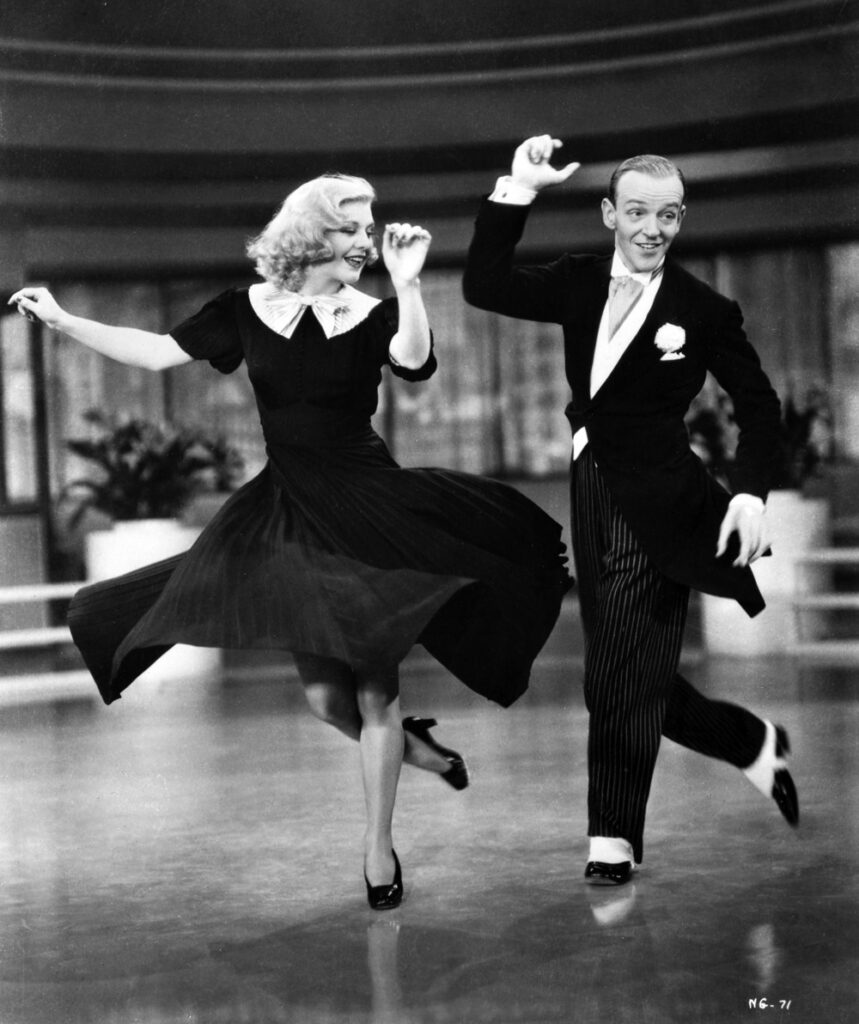The Charleston Dance: Everything You Need to Know

What is The Charleston?
The Charleston is a dance that soared to popularity in the United States in the 1920s, a time period which is commonly referred to as the “Roaring Twenties”. The initial burst of popularity for The Charleston came in 1923, when a Broadway musical called Runnin’ Wild featured a James P. Johnson jazz composition called “The Charleston”, which of course was accompanied by the dance. Runnin’ Wild had a strong run on Broadway that helped kickstart the Charleston dance into mainstream popularity.
Although the Charleston dance did burst onto the mainstream in the 1920s, it is believed that the dance was performed in the city of Charleston much earlier. In fact, the Charleston is thought to have originated within the African-American community on a small island near Charleston as early as 1903, and by 1913 the dance appeared in Harlem stage shows.
Still, though, there is no doubt that once Johnson’s composition “The Charleston” and the accompanying dance appeared on Broadway in 1923, the dance was poised to be performed by people all over, with a surge in popularity that lasted up until 1927.
While the Charleston dance did peak in popularity in the late 1920s, it did evolve a bit over the years. In the 1930s and 1940s it became part of the Lindy Hop street dance, and an alternate version of the dance developed that was adapted to the swing music that was popular at the time. The 1930s and 1940s style of Charleston dance is commonly referred to as either Lindy Charleston or Swing Charleston.
A deeper look at the origins of the Charleston dance
The origins of the Charleston dance can be traced way back to African-American culture in Charleston, South Carolina in the mid 19th century. In particular, the steps associated with the Charleston are rooted in the African-American dance called the Juba, which originated with Kongo slaves that were brought to Charleston and was danced on plantations in the Lowcountry.
At the time that the Juba originated, there were no rhythm instruments allowed because plantation owners were afraid that the slaves would communicate secret messages if they had instruments. Thus, the dance itself was the main source of music for the original Juba dance.
By the mid-19th century, the Juba dance developed musical accompaniment and paved the way for the development of many important cultural dances, which of course includes the original Charleston dance. One of the lesser known facts about the Charleston dance, is that before reaching Broadway, The Charleston was danced among dock workers in the Holy City, which not coincidentally is where “The Charleston” composer James P. Johnson said he found inspiration for the song.
It is believed that the version of the Charleston that appeared in the 1923 Broadway musical Runnin’ Wild was specifically choreographed to achieve mainstream popularity, which probably contributed to the widespread prominence of the Charleston in the 1920s, especially among young women (known as “flappers”). The short, above-the-knees dresses that young American women wore in the 1920s allowed for easy range of movement and made dancing the Charleston easy and fun. For this reason, the Charleston was actually banned in many dance halls as the time because it was believed to be too risque and revealing.
How to Charleston Dance
Figuring out how to dance the Charleston isn’t all that hard when you realize this isn’t 1923 anymore and we’ve got things like Youtube to guide our way. There are a few different types of Charleston dance, depending on whether you’re by yourself, with a partner, or with a group, but the basic steps are the same across the board.
Before you watch the Youtube video that breaks down all the different ways to dance the Charleston, let’s go through the basic steps so you have an idea of what you’re getting yourself into:
- Begin standing flat on your feet, with your palms facing the floor
- Put your left foot forward, and then move your right foot in front of that, giving your left foot a tap with the heel of your right foot.
- Move your right foot back, and followed by your left foot, and tap the heel of your right foot with your left foot.
- Swing your arms side-to-side as you go.
- To bring out the jazziness of the Charleston, twist on the balls of your feet as you go through the steps, and move your knees in and out.
Ok, I understand learning how to dance the Charleston by reading a list of steps is difficult, so watch the video below to really learn how to do it.
What type of music is the Charleston danced to?
While you can always dance the Charleston to the original James P. Johnson composition, that might get boring after a while. The Charleston can be danced to basically any ragtime jazz music in an upbeat 4/4 time signature. That might be gibberish to some of you reading this, so we went ahead and made it nice and easy.
Enjoy a Spotify playlist filled with hand-picked Charleston dance music below, which Spotify user John Bell created to bolster to his swing music at swing dances and parties. Stream some Charleston dance music below, and practice those moves!